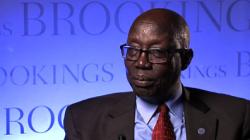At the end of the year 2000, there were more than 491,000 persons internally displaced within the Russian Federation. Of these, an estimated 170,000 were displaced within the Republic of Chechnya, while 160,000 Chechens were residing in Ingushetia, 20,000 in Dagestan and 20,000 elsewhere in the North Caucasus region; in addition, there was an estimated 106,000 persons, mostly ethnic Russians, displaced during the conflict in Chechnya between 1994-1996, and some 15,000 persons who remained displaced in Ingushetia as a result of the 1992 conflict over the disputed Prigorodny region of North Ossetia.
It was against this backdrop that an International Conference on Internal Displacement in the Russian Federation was organized by the Institute of State and Law of the Russian Academy of Sciences, the Moscow-based non-governmental organization (NGO) ?Partnership on Migration,? and the Brookings Institution Project on Internal Displacement. The 70 participants included government experts and officials who deal with issues relating to forced migration, representatives of local NGOs and displaced communities, local academics and lawyers, representatives of regional and international organizations and international NGOs working in the country, as well as international experts, including Dr. Francis M. Deng, the Representative of the United Nations Secretary-General on Internally Displaced Persons.
The objective of the conference was fourfold:
1) to review the situation of internal displacement internationally, with particular reference to the region of the Commonwealth of Independent States (CIS) and the Russian Federation;
2) to stimulate the further development of institutional and legal frameworks in the Russian Federation for addressing internal displacement and reinforce those in government and civil society interested in strengthening local and national capacities;
3) to discuss international standards on internal displacement, in particular the Guiding Principles on Internal Displacement, and their application; and
4) to identify a program of action for future activities on this issue.
The Brookings Institution is committed to quality, independence, and impact.
We are supported by a diverse array of funders. In line with our values and policies, each Brookings publication represents the sole views of its author(s).




